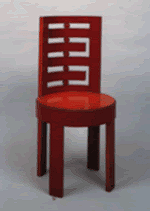This website uses cookies so that we can provide you with the best user experience possible. Cookie information is stored in your browser and performs functions such as recognising you when you return to our website and helping our team to understand which sections of the website you find most interesting and useful.
Fondazione Palazzo Ducale Genova
Twentieth Century Art, or rather “Novecento” style, is particularly rich and versatile from an expressive point of view, if it is analyzed within Italian cultural events of the period straddling the two world wars.
As from 1922, the year in which Margherita Sarfatti’s artistic movement made its first public manifestation, this style spread and made a name for itself within the field of architecture and the figurative and decorative arts. The several linguistic variants of this tendency though shared a common denominator, in other words a return to a classic ideal.
Despite the different declinations and the adherence to an international climate of a return to order, the Twentieth Century style nonetheless maintained the cultural inheritance of the avant-gardes, also by absorbing the stimuli of the most innovative research approaches, in a sort of formal balance which can for example be found in the chairs designed by Marcello Piacentini (1881 – 1960) as a wedding gift for Fiammetta, Margherita Sarfatti’s daughter, and in the Portrait of the Art Critic Matteo Marangoni painted by Baccio Maria Bacci in 1919.

